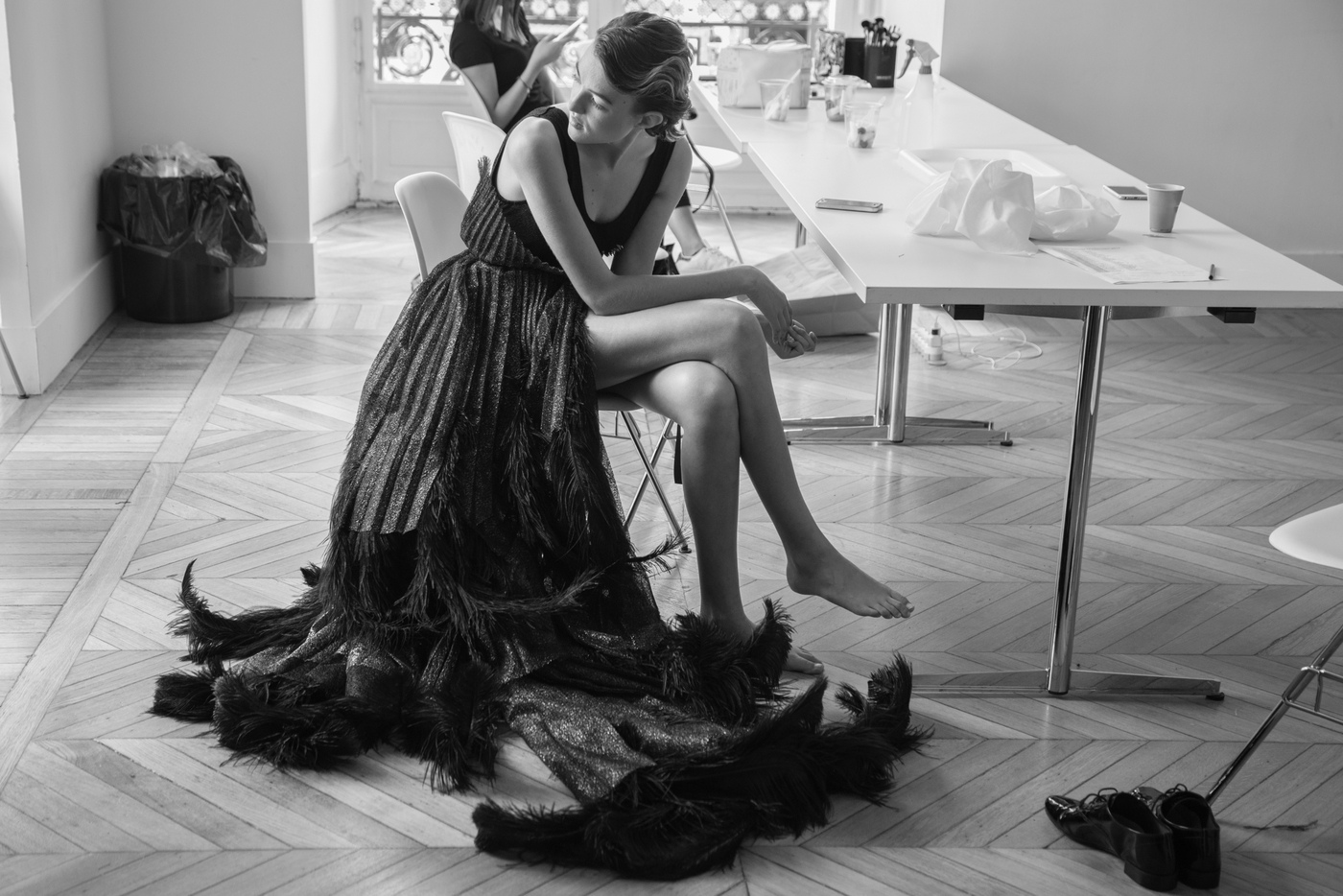This was an experience that you can’t get in school; it is like a master teaching their apprentice. – Hera Zhou
“Being in Paris is a dream city for a fashion designer”, says Hera Zhou, and she seized the opportunity with no hesitation. Imagine working at the Louvre Museum, looking at sketches from famed couture designers, meeting people from all over the world with a common interest of fashion design and the arts, and most rewarding, exhibiting your work at the Museum.
This was a reality for the Shanghai designer Hera Zhou. She was one of 13 students [out of hundreds who applied] who participated in a Masterclass program of The Arts of Fashion Foundation at Musée des Arts Décoratifs, a museum of the decorative arts and design, at the Louvre. Her participation involved learning the craftsmanship of haute couture from the art direction of leading designers while gaining valuable exposure and collaboration with the famous material houses of Maison Lemarié and Maison Lesage, part of Les Métiers D’art Chanel. With a specific given theme, “The Wave”, inspired by The Great Wave off Kanagawa (the Great Wave), the painting from Katsushika Hokusai, the goal of this 4 week program was to produce a two look collection to be exhibited at the end of the session. Zhou was able to push her creative potential and add a technical body of work to her portfolio, exhibited at Musée des Arts Décoratifs at the Louvre.
“This was an experience that you can’t get in school; it was like a master teaching an apprentice”, says Zhou. The strength of Zhou’s work is the interpretation she brings from visual art. In The Wave collection, she is inspired literally, with depth, layering, and rigid density, giving the two-dimensional The Great Wave off Kanagawa painting a sculptural reality with her pleating technique.
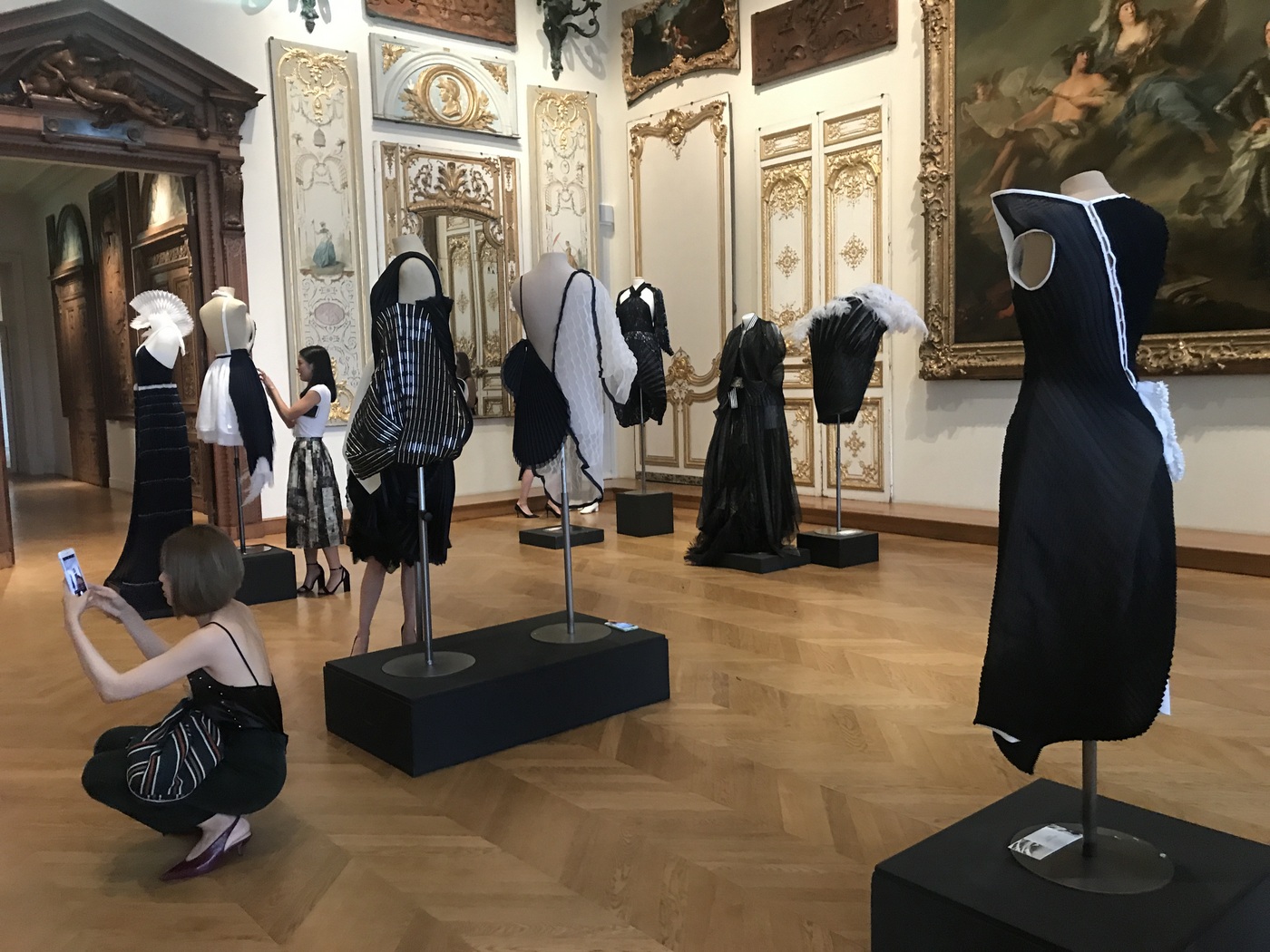
Hera, how did you get selected as one of the 13 students [out of hundreds] to participate in the Master Class program of Arts of Fashion Foundation?
I knew about the Arts of Fashion Foundation because my fashion illustration professor, Liz Goldberg, encouraged me to apply for the Arts of Fashion Competition. She thought my design would be good for this competition. When I got the finalist email from the Arts of Fashion, I went to their website to do research and then found the Summer Masterclass program. I applied for it without a hesitation!
Being in Paris is a dream city for a fashion designer. I think it’s a great opportunity if I can live and touch the Paris fashion field for a while. Along with the application, I wrote the requested motivation letter to Nathalie Doucet who is the founder and president of the Arts of Fashion Foundation. The letter was to tell her why I wanted to enter this program. She set up an interview with me online. Because I was one of the Arts of Fashion Competition finalists, she knew my design style and liked my fabric design very much. The interview went very smoothly and extended to the whole afternoon talking about both my design for the competition and fabric design, and then she accepted and welcomed me to the Masterclass program.
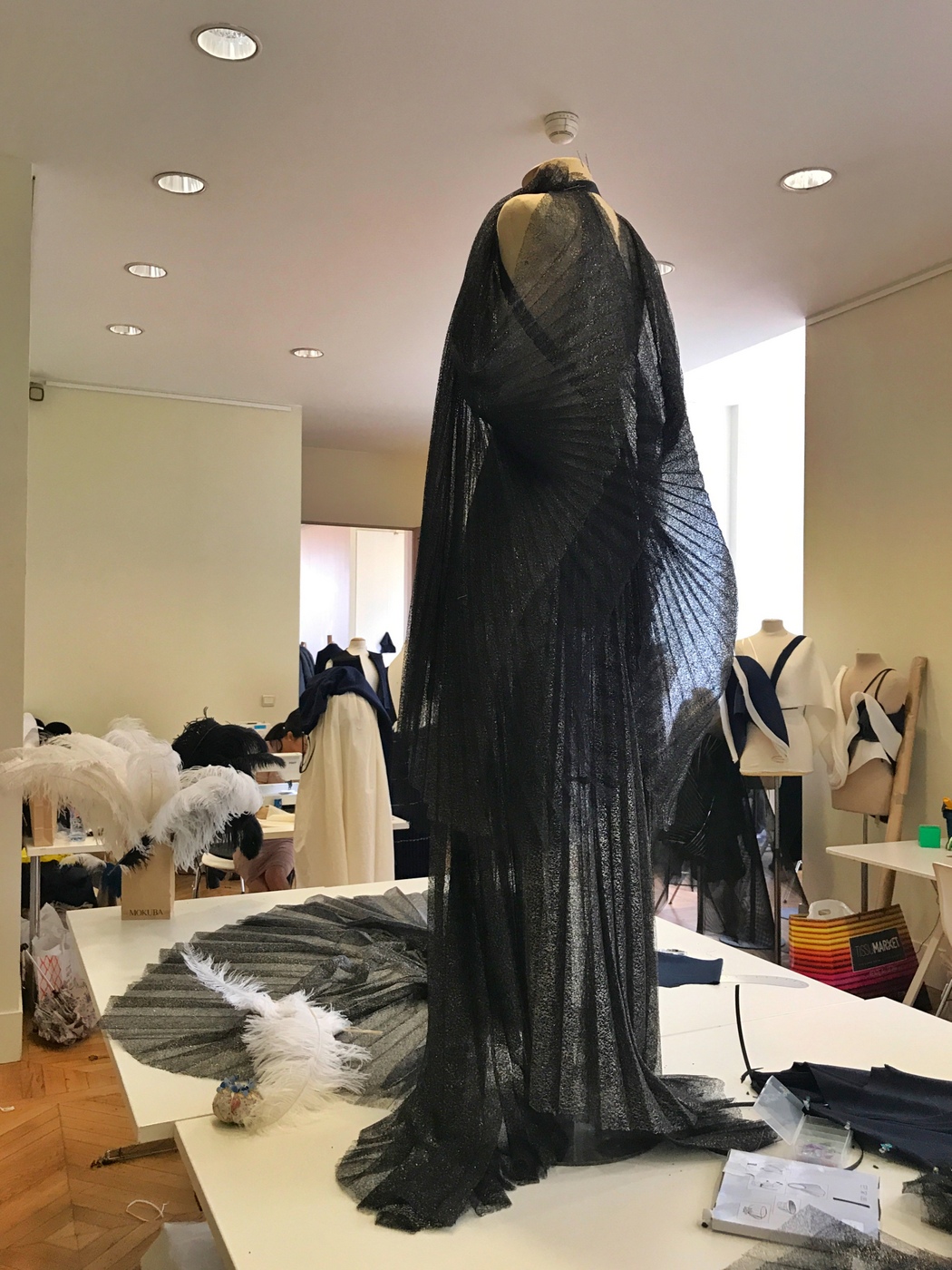
How did this Masterclass compare to your design studies at Drexel University?
This Masterclass is a true high-intensity program. We were required to make two looks in four weeks. Nathalie told me to not think about touring Paris during the program. It came to be true… I never visited the Louvre Museum and the Eiffel Tower until the program finished even though I passed by the Louvre every day. The experience was busy and fun. During the first two weeks, the mentors took us to different fashion museums and galleries to see a lot of famous fashion exhibitions which made me understand that Paris is not big, but full of fashion. We also talked about sketches and went to the fabric and material market during the first two weeks. So, we were left with only having two weeks to make two looks. As we all know, in a University a fashion student maybe required to make two looks in one term, this program was really a challenge for a student.
The Masterclass was taught by a couture designer, Stephanie. Being familiar with the fashion market in Paris, she took us to fabric and material stores helping us to find which material was best for our design. This was an experience that you can’t get in school; it is like a master teaching their apprentice.
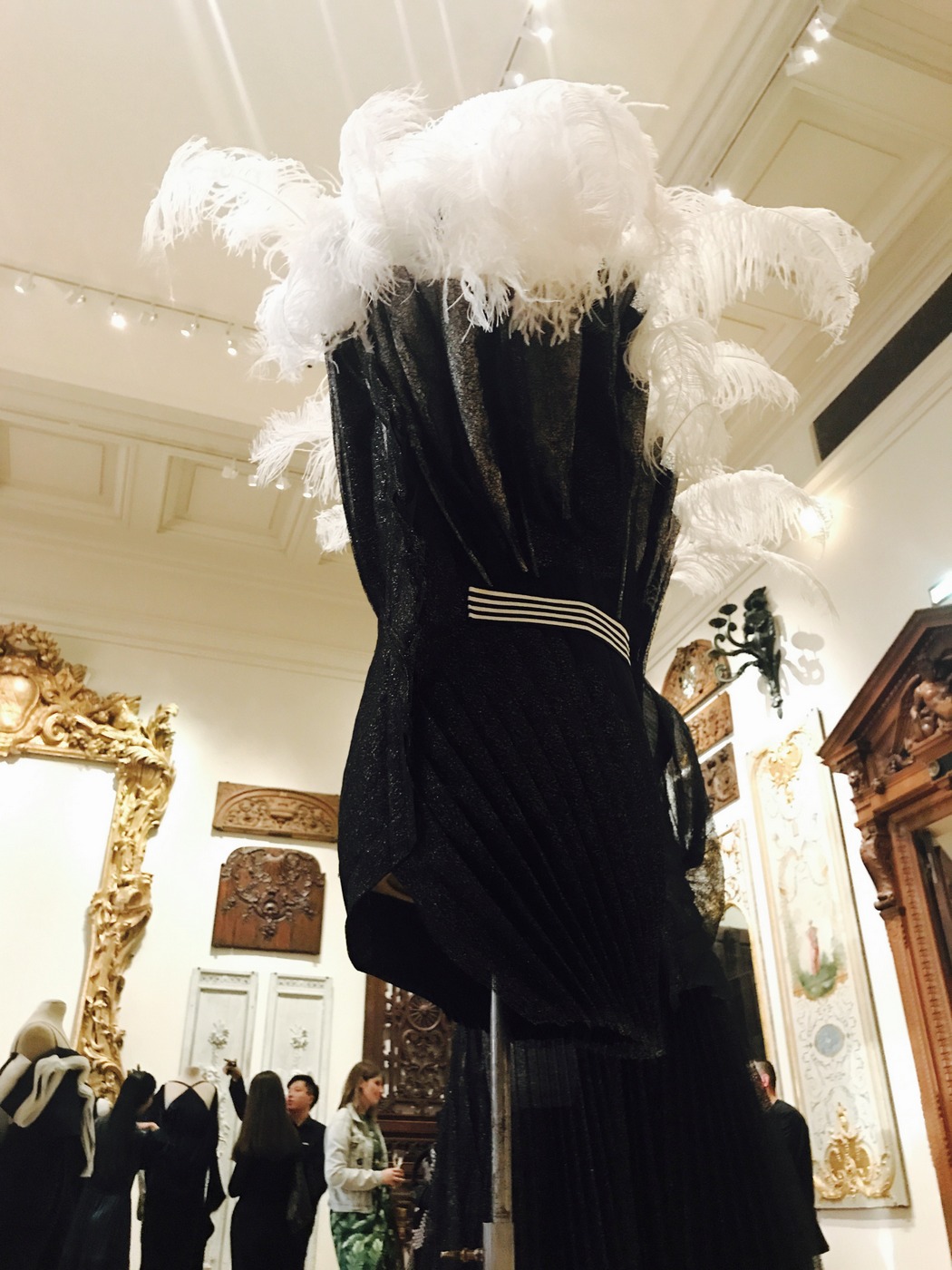
Within this 4 week program you worked among your peers, mentors, and, of course,the lead couture designer. What was this experience like and what did you learn?
The experience was wonderful, the mentors took us to the pleated fabric house –Maison Lognon, the feather house –Maison Lemarié, and the embroidery house – Lesage. In the sample rooms of all of them, I saw the most beautiful fabric in the world! Each sample piece was like an art piece, a lot of technique gathered in a small piece of fabric. That really fed my eyes.
During the 4 weeks, I got to know the fabric market and some really good material stores in Paris. Now I know how a real couture garment, like Chanel, is made by hand.
And of course, I now know the great fashion students and mentors in the class, we came from different countries, but all love fashion, some of them are really good friends of mine now.
Each Masterclass has a pre-defined atmosphere and a given theme. Why did they call this collection or the theme “The Wave”?
They have a theme for the program every year, for the last year, the inspiration of the theme is from The Great Wave off Kanagawa (the Great Wave), the painting from Katsushika Hokusai.
You speak a lot about the fabric and materials market in Paris. I also believe it is one of the best parts of creating a collection. Hera, what was the collaboration like with the historical institutions of Maison Lemarié, Maison Lognon, and Lesage in developing your feathers and pleating? What did they provide and what did you do in the design of the fabric?
Thanks, I also think the fabric is a really important thing for the couture making.
We had a tour in the Lognon, Lemarié and Legase, but we only collaborated with Lognon for the pleated fabric. The Lognon leader introduced and showed the pleated making process to us. She talked to each of us about the paper pattern which we developed for our design and gave us advice when she felt that the pattern was not good for the design. In the Lognon, all the paper pattern was pleated by hand, no machine pleating. We couldn’t make a huge fabric there; we had to cut the fabric close to the paper pattern size. All the paper patterns have a life. They may have to retire after use too many times.
For the feather part of my design, I learnt the feather knowledge from Bienvenue a Plumes de Paris, a very nice feather store. The salesperson taught me how to glue a feather to fabric, which part of the feather is good to sew, and he also taught me how to make a feather curve and dancing – by steaming the feather on an electric Kettle, which I thought was really fun.
For the fabric of these two looks, I sewed two different colors (gold and black) of layers of fine textured lace fabrics together, and then did the pleating with Maison Lemarié – Lognon, and then draped or sewed them to a knitting fabric.

You have an interesting story about the white feather dress.
I love the dress with white feather better. My professor saw the sketch when I was drawing. She didn’t want say much to me, but did say that is an impossible look, no one can make it look real. “I can try to make it for fun, if I want, but don’t ask me how to do it”, she said, “because I don’t know how”. I don’t believe that there is a design that can’t be made, so I made it like this. My professor was impressed and spoke very highly of the look – she is a couture designer.
Given that your experience in the Masterclass at Musée des Arts Décoratifs, located in the Palais du Louvre, is not available to all fashion students, what advice would you give students today in developing their creative potential and techniques? How important is it for students to be in a creative environment like this to push their design skills?
Never put eyes only on the classmate around us, and never only satisfy the needs of homework. Every time I do research online I can always find tons of fashion designers who have much more talent than I do in the world, then I feel like I still have so much to learn. Fashion design is a huge field. There’s a lot out there waiting for us to learn, such as, we need to think how the pattern appropriate for the ergonomics to make the pattern more comfortable; we can control the color better after knowing the color psychology; we should study the fabric; knitting techniques; how to cut an interesting fabric shape; painting; photography; etc. There’s so much we can improve our design on. The only thing is don’t stop learning.
I think a good fashion designer can study and learn from a lot of different subjects and not just in one particular place. But, of course, please don’t miss out on an opportunity which can help open your eyes and better your design practice. Be open to receive.
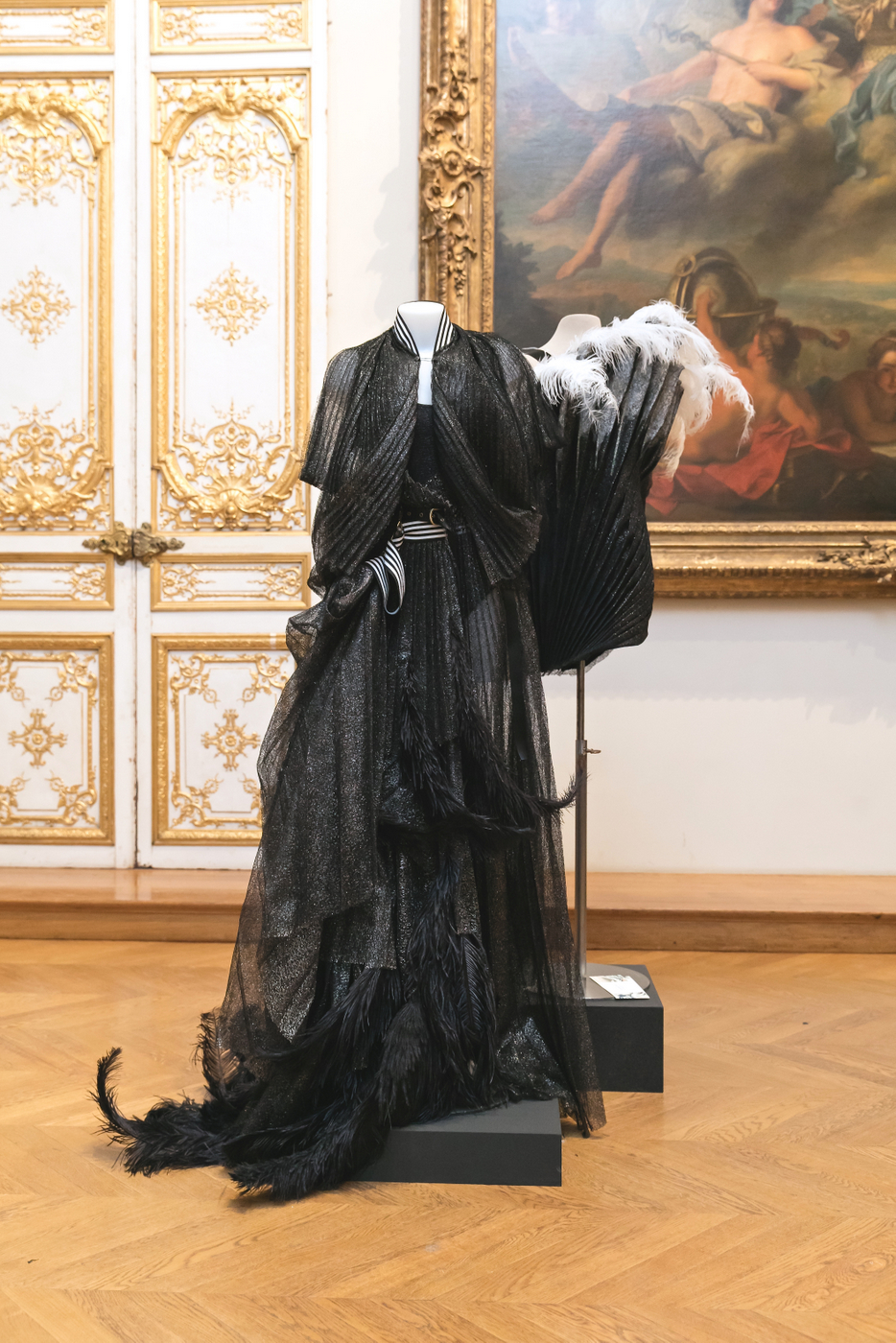
Hera, keep creating art through your manipulation and experimentation with fabric. I congratulate you and wish you continued success.
Hera Zhou’s The Wave collection is exhibited – Blurred Boundaries: Fashion as an Art; 21 September – 11 November, 2018, In the Annex of GraySpace Gallery, Santa Barbara, California.
For more information, click Hera Zhou
Feature Photo: Arts of Fashion Foundation, Musée des Arts Décoratifs, Paris, “The Wave”, Designer: Hera Zhou designer, Photo: Yann Bohac, Model: Maëlys Rollinde – Maxence Orard

